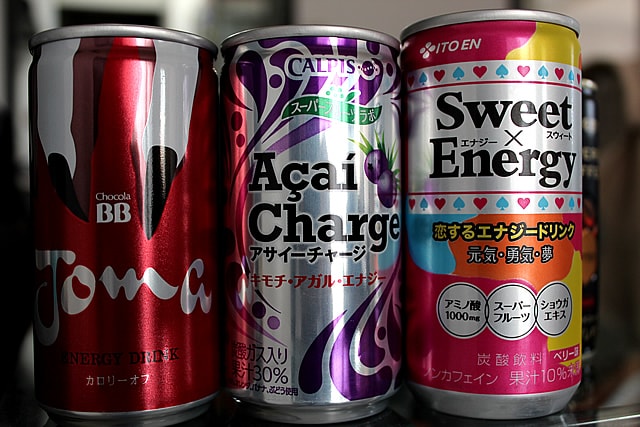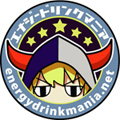A flurry of new products!! Energy drinks and health drinks
Flavor of April 2014: The Outbreak of the Energy Drink War

As 2014 unfolds, a flood of beverages bearing the name "energy" has hit the market. While the exact reasons behind this surge remain unclear, the simple truth is likely that these drinks are highly profitable and offer a chance to ride the trend. After all, a regular juice that costs around 100 yen can be sold as an energy drink for 200 yen—just by calling it one.
Brands differentiate their products with unique selling points like targeting women, using natural ingredients, or incorporating trendy components. However, none seem to stand out significantly. Promotional events, free samples, and social media buzz can get people to try them, but the real question is: how many of these drinks will survive in the long run?
 Author: Energy Drink-kun
Author: Energy Drink-kun
In 2001, while living in the United States, I encountered energy drinks through the dance scene and was deeply impressed. After returning to Japan, I found that energy drinks were considered novelty beverages, so I established a comprehensive website in 2013 to share the true appeal of energy drinks. As an energy drink enthusiast, I began drinking them seriously again, collecting over 8,000 varieties of energy drinks from various countries. I am also active as a critic and expert, receiving media interviews.
Flavor of Oversaturation: When Energy Drinks Flood the Market
Recently, the sheer number of energy drinks hitting the shelves has become so overwhelming that some people have started questioning, "What even is an energy drink?" After all, at this point (as of April 2014), it seems like anything can be labeled as one.
Related Articles
Looking at Red Bull, the pioneer that ignited the trend, it's clear that Red Bull itself never needed to explain what "energy" meant. There’s no need to highlight target demographics or boast about ingredients—just playing their videos, posting photos on social media, or hosting events is enough to maintain a strong, dedicated following.
Red Bull supports extreme sports, active athletes, music, and anyone pushing their limits. It offers unique experiences as content, and the energy drink itself is just one element within that larger world.
Monster Energy and Rockstar follow the same path—there’s no need to explain what they are. Their branding and image strategy are solid, conveying "this is what an energy drink is" without question. (Though in Japan, this presence is somewhat lacking.)
But what about the countless energy drinks flooding the market now? Of course, promoting ingredients, target audiences, and branding is important, but many of these drinks fail to deliver the excitement and cool factor that define the category. Instead, they come across more like health drinks.
It’s clear that many brands are simply riding the energy drink boom. With so many products disappearing from store shelves or being discontinued, it makes you wonder: how long will this new wave of energy drinks last?
Related Articles
Thinking About the Energy Drink Industry
But in reality, none of that really matters.
The truth is, companies see an easy opportunity:
"If something that normally costs 100 yen can be sold for twice that, why not take advantage of it?"
"If we can reach a certain sales target within a few years, we’ll turn a profit—and if we hit it big, even better!"
Most brands aren’t aiming to dominate the industry or leave a lasting legacy; they’re just trying to cash in while the trend is hot.
In contrast, Monster Energy continues to support products like Chaos and Absolutely Zero without discontinuing them. While the original Monster remains the top seller by far, they’ve maintained variety. Personally, I think if they released more Ultra series flavors and marketed them towards active women, they could be surprisingly successful.
Imagine the promotions:
A stylish office worker enjoying an Ultra after 5 PM before heading to a club,
Gyaru sipping Ultra at the beach while getting hit on,
A fitness instructor drinking Ultra during a break—
The possibilities are endless! (´∀`*)
Related Articles
Review
*This article was originally written during the 2014 energy drink boom, where I predicted the success of the Ultra series. The following year, in 2015, Ultra was officially launched in Japan! (Updated July 2019)*


 Since 2001, Energy Drink Maniac has been drinking energy drinks and providing the most detailed reviews of global energy drinks based on firsthand research.
Since 2001, Energy Drink Maniac has been drinking energy drinks and providing the most detailed reviews of global energy drinks based on firsthand research.